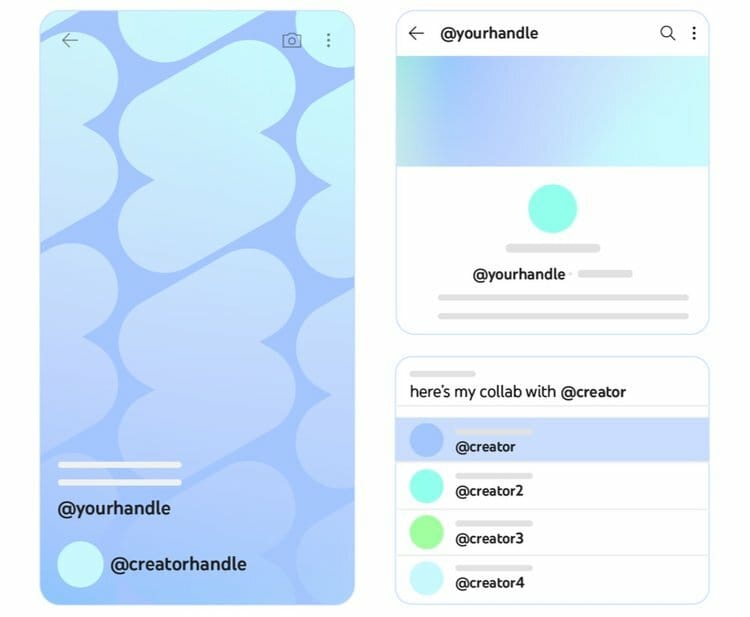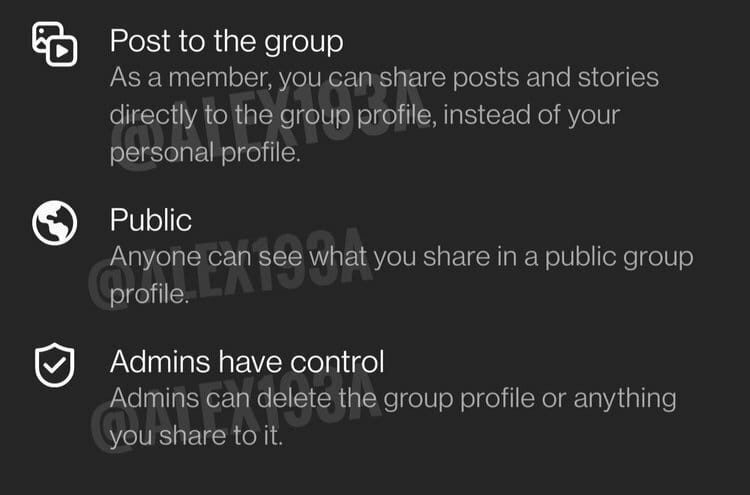This week, Meta held its Meta Connect 2022 event, unveiling the Meta Quest Pro, the first product in a new line of advanced virtual reality (VR) headsets. The $1,500 product features advanced collaboration, productivity, and creative tools.
The metaverse is still in its infancy, but Meta's investments are hard to ignore. Despite its limited tie-ins with Instagram and Facebook, Meta’s VR products and experiences will significantly impact the creator economy.
It will allow creators to collaborate in immersive experiences, increase their productivity via digital workspaces, and monetize by creating digital experiences and products. But, of course, for this to become standard practice, greater access, education, and adoption of the metaverse are required, which will happen over time.
For the time being, the best thing we can do as creators and marketers is to get involved and gain first-hand learnings in advance of the metaverse becoming much more mainstream. By testing and learning, you'll know how you and your brand can take advantage of the opportunities the metaverse brings for creators, marketers, and everyday consumers.
Today’s Edition:
How AI-powered image and video generators will disrupt the creator economy
YouTube introduces handles to help creators have a more unified presence
Instagram tests Group Profiles to allow users to post content to a shared profile
The Rise Of AI-Powered Text-To-Image/Video Generators & What It Means For The Creator Economy

Artificial Intelligence (AI) has existed in some form for decades. But it has become much more intelligent, powerful, and popular in recent years.
The Rise Of AI-Powered Text-To-Image/Video Generators
Generative AI, a form of AI that uses machine learning algorithms to create new content based on existing work, has rapidly gained traction. This has given rise to many text-to-image and text-to-video generators like OpenAI’s DALL-E 2 and Midjourney that allow people to use text to generate images and videos. To use these generators, users enter strings of text to describe the type of image or video they want. Then, the generator uses a dataset of text-matching images and videos to produce a never-before-seen image or video.
The ease of use and content quality have resulted in millions of people flocking to them. Most people use them as a means of expressing themselves, but many have also recognized their value beyond novelty.
Big Tech Takes Notice
The popularity of AI-generated visuals has caught the attention of big tech companies too. During the summer, TikTok launched the AI Greenscreen feature, which allows users to type text prompts to generate an image that can be used as a background in their videos. Meta also introduced Make-A-Video recently, which lets people create high-quality videos with text prompts. Google and Microsoft have also entered the space with Imagen Video and Image Creator, respectively.
What It Means For The Creator Ecosystem
AI-powered generators are ushering in a new era of creators, helping people become first-time creators. People who may not possess the skillset to take an engaging photo or create a video, now have the opportunity to do so with this technology. AI lowers the barrier to entry for content creation, even more so than what the iPhone does for photography or TikTok does for video.
Established creators can incorporate AI generators into their existing creative processes or workflows, especially when it comes to ideation and inspiration. For example, they could generate images and photos that can serve as a storyboard instead of putting one together through traditional means. Creators can use generative AI to expand into other creative works while saving time and money. For example, a creator that typically outsources graphic design work could use AI to handle it themselves and benefit from doing it for free or at a much cheaper cost within seconds.
Regardless of the use case, this helps solve some of the key challenges people face with creating and sharing content, such as turning an idea into a tangible asset, creating content in a timely fashion with less effort, and creating high-quality content.
Existing Challenges
Generative AI isn’t without challenges. One of the most notable challenges is the idea of using others' original work. Some argue that people are infringing on copyrights and plagiarizing because generators use existing works from photographers, videographers, artists, and others. Commercializing AI-generated content can be particularly problematic. Some have started monetizing their creations, such as selling prints of them on Etsy or licensing them to stock photo platforms, which has caused a great deal of pushback from certain creative communities.
An argument can be made, though, for people who use generators. The specific images and videos that are generated depend on the exact text they input, including the combination of words and order of words. People must know how to manipulate the software, such as adding and refining text prompts to get their desired results. As Karen Cheng, a visual artist who created the first AI magazine cover for Cosmopolitan this past summer, revealed that it can take hours and hours to identify the text prompts that deliver desired results. Although different than typical skillsets, leveraging technology is a skill in itself.
Other existing challenges are biases in the algorithms, using generators to create harmful content, and misinformation, many of which are the same challenges that social media platforms face today.
Going Forward
Like most disrupting spaces, generative AI will grow and improve over time. Generators will become even more powerful, helping people to produce even higher-quality content, especially video, in a shorter period of time. There will also be more established norms, including how people look at the use of creating from others’ existing work. The addition of revenue sharing or licensing will help make others more comfortable. But eventually, as more people, including creators and brands, benefit from generative AI, people will view it similarly to how artists may sample existing songs to create new songs.
Overall, AI-powered generators will help creators accelerate their creativity and speed up their productivity, allowing them to churn out content, build audiences, and monetize faster than ever. As a result, there will be even more creators in the ecosystem, which is a benefit for all.
YouTube Introduces Handles To Help Creators Have A More Unified Presence

YouTube introduced handles for creators. Like Instagram and TikTok, handles are unique identifiers in the @username format.
How Handles Will Work
Every YouTube channel will have a handle, which will also serve as the unique URL for the channel. Until now, only creators with more than 100 subscribers were eligible for custom URLs. This update will give all creators a unique URL based on their handle.
YouTube will display handles across various aspects of the platform, including channel pages, video descriptions, Shorts, search results, and comments.
Over the coming months, YouTube will notify creators when they can choose a handle. Each creator's timing will depend on a variety of factors, including their overall YouTube presence, subscriber count, and whether their channel is active or not. If creators already have a personalized URL, that will become their default handle. However, they may choose to change it. Creators that don’t choose a handle will have one assigned to them based on their channel name.
The Benefits Of Handles For Creators & Viewers
Handles bring YouTube in line with other major social media platforms that allow users to create unique handles or usernames. This allows creators to direct viewers to their channel and content and makes it easier for users to find creators and content. Additionally, they enable users to quickly identify creators when they come across their handles, such as when watching Shorts or when they are mentioned in comments.
It is also helpful to ensure viewers engage and interact with the creators they intend to. In the past, people have made copycat channels of popular YouTubers and tried to monetize them because channel pages weren't unique. Unique identifiers in handles make it much harder for people to create channels that mislead viewers, offering creators an enhanced level of protection.
Last but not least, handles make it easier for creators to promote and collaborate. For example, they can tag another creator in the title of a video they have collaborated with. Handles may also lead to YouTube eventually rolling out a feature similar to Instagram Collabs, where creators can share a collaborative video across both of their channels with credit to both handles.
Instagram Tests Group Profiles To Allow Creators To Share Content To A Shared Profile

Instagram is testing a new Group Profile feature. The feature would allow users to collaborate and share Feed posts, Stories, and Reels to one, shared profile.
Currently, the test is limited to select users in Canada. The feature was first discovered this past August and recently confirmed by a Meta spokesperson in a statement to Insider.
Group Profiles will have Admins and can have up to 5,000 members. When setting up a profile, Admins can add a description and website and choose to make it public or private. In the case that they are private, they are visible only to members. In addition, once they are private, it cannot be undone. Admins can also delete the profile or any shared content at any time.
How Creators & Brands Can Use Group Profiles
Group Profiles provide new ways for creators and brands to share content.
Creators could launch private Group Profiles to serve as a digital co-working space, where they can preview upcoming posts and get feedback from the creator community, similar to VSCO Spaces. Also, creators who are part of collectives or groups (e.g., 100 Thieves) may opt for a Group Profile to build a central place for group members to share content and direct their fans to.
As for brands, Group Profiles could be useful for holding companies like Unilever to have a collaborative profile, where the different brands under them can post content from their respective brands. They could even use the Collabs feature to share that content across their specific brand profile and the Group Profile. In addition, brands could use these profiles to bring their ambassadors and creator partners together.
More Ways For Creators To Share & Collaborate
The testing of Group Profiles reflects the greater trend in platforms, allowing users to share content in private or smaller spaces and helping creators collaborate. In just the last few months, several features supporting these have been launched or are in testing. There’s going to continue to be more in the near future.
On The Blog
TikTok announces a Profile Kit feature that allows creators to display their videos across other sites and platforms.
Twitch launches Showcase, a new interactive tool to help streamers create assets for their streams and social media.
Twitter rolls out Link Spotlight for creators and brands to drive traffic to their content, products, and services.
What I’m Reading
The Creator Economy Now: 25 leaders shaping a $100 billion market (Fast Company)
Let’s get real: What TikTok’s BeReal lookalike means for marketers (Marketing Dive)
Why Amazon won’t foot the bill to pay Twitch streamers better (Washington Post)
